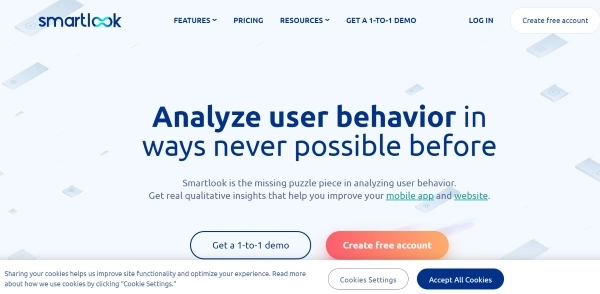In most cases, research with UX users (e.g., interface and usability testing) requires recording.
Why? The answer seems pretty obvious.
Recording a course of a UX study makes it possible to document and analyze it later.
We can also use the acquired material in the form of audio recordings, videos, photos, screenshots (static materials), and video recordings of screens (dynamic materials) of user interaction with an interface for educational and presentation purposes.
Recorded research allows us to manage the obtained information better.
They allow us to increase the reliability, validity, credibility, and usability of the results obtained in a study.
Recording sessions in UX Research have their advantages, but they also have their limitations.
What are the advantages of recording a UX Research process? What are the disadvantages of recording User Experience Research?
Why is recording facial reactions, gestures, body language, and expressions as necessary as recording interface interactions?
Why are the impressions, notes created and recorded "live" during a session as important as analyzing the audiovisual data after a study?
So, let's decipher what's behind the term Session Recording in User Experience Research.
We cordially invite you to read on!
Recording user sessions – the most popular techniques
The course of any study involves the need for proper control, organization, and structuring of its progress.

The number of stimuli and activities and the sheer dynamics of the course of research make it difficult for a single or even a whole team of researchers to remember all their impressions, observations, thoughts, or discoveries.
It's equally difficult, sometimes even uncomfortable, to take handwritten (or digital) notes, that would be:
- Satisfactorily accurate and exhaustive
- Comprehensive (address different dimensions of observation and reflection)
- Cognitively meaningful.
For researchers, conducting a study involves a high cognitive load, stress, and the need to synchronize multiple tasks and issues, which impacts the level of attentiveness, concentration, perceptiveness, insight, and research inquisitiveness.
It takes a lot of skill to focus on observation and jot down notes and findings, especially since taking notes can't affect respondents or the study.
Recording the course of the study is a form of documenting it that lets the researcher feel more comfortable and focus on fewer elements.
Metaphorically speaking, recording is a form of supplementing, assisting "the eyes and the ears of a researcher."
We should be aware that during a typical research session, a researcher needs to:
- Moderate and/or observe the tasks that are performed
- Maintain the proper pace of the study
- Conduct it according to a set scenario or direct it appropriately
- Track body language, gestures, facial reactions, emotional responses, behaviors, and attitudes
- Monitor, memorize, or record (in memory or notebook) verbal statements
- Maintain impartiality, neutrality, and appropriate presentation of questions, prompts, and instructions
- Observe their own reactions and behavior as well to avoid bias or influence research participants
- Take care of respondents' comfort
- Capture information coming from users and respond to it (including archiving it in the form of a note).
Orchestrating all these goals, activities, and needs is extremely difficult.
More so, we need to consider the researcher's perceptual limitations and maintain a healthy skepticism about our own abilities in this regard.
Modern technology and tools meet those limitations and support the researcher in obtaining the most illustrative, neutral, and precise material – a record of a research session.
UX research is most often recorded with the following:
- Audio recorders
- Video recorders
- Cameras
- Handwritten notes
- Tools that help record user interaction with an application interface.
Audio recording of UX research is particularly recommended for studies where taking handwritten notes is problematic (e.g., unstructured research).
We should also use this documentation method when researching complex, cognitive, and methodologically difficult topics, problems, and needs.
Listening to the recording of the study makes it possible to grasp additional meanings, contexts, and information and make new observations and have new impressions and insights.
Audio recording of UX research is also less expensive and much simpler technically and organizationally.
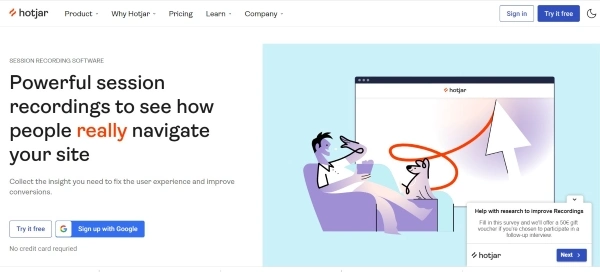
Respondents tend to see a recording as more tactful, less intrusive, and raising less resistance and discomfort, which is undoubtedly a significant advantage.
Video recording of UX research is, of course, richer because of the visual aspect. It makes it possible to record study participants' reactions, behaviors, attitudes, and changing emotions over time.
Video recordings are much more detailed, more illustrative, and provide more complex and valuable material for analysis.
Video footage also allows us to capture the following:
- Diversity of research
- Contextual variables
- Dynamics of research.
They're much more reliable, but we should conduct them with an awareness of the impact of a device, a set, and an operator on respondents' comfort.
The presence of a camera and team should be as discreet as possible. The position of a camera during testing should be static so that its presence isn't a distractor for a respondent.
Video recordings are recommended for usability testing and ethnographic observations.
Audio recordings are sufficient for interviews where respondents' actions aren't an important variable.
An improperly arranged and conducted UX study with video recording can cause significant discomfort.
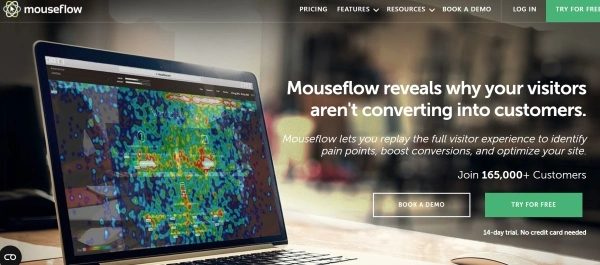
The camera, the set, and the film crew can be seen as embarrassing and intimidating.
Photographic documentation of the study may seem like a technique that isn't very illustrative and spare in information, but it can be really useful.
It can register tools and context. It's also an excellent supplement to audio recordings.
Photographing is less intrusive and embarrassing than video recording, and it can be an alternative to this technique.
Fotos, as part of the study's documentation, an element of illustration of the study's results, facilitate their communication.
They allow stakeholders to understand better the diversity of digital product users, the influence of a context, the course of a study (e.g., its complexity or conditioning)
Taking handwritten notes is the most basic technique for documenting and recording a researcher's impressions and observations during a user study.
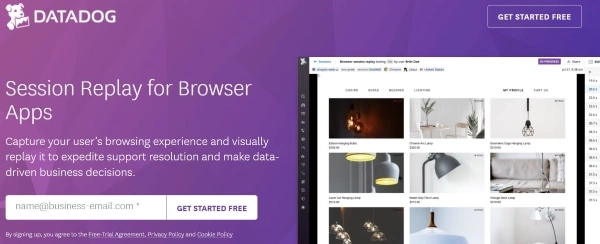
Due to their easy and seamlessness execution, notes are recommended for remote and structured research (with defined tasks and questions, a fixed course structure makes it easier to take notes).
Lack of restraint and sensitivity in taking notes can affect a study.
Taking notes influences the quality of eye contact, the atmosphere of the study, and the respondent's attitude toward the researcher.
Note-taking can also serve as a signal to stop or encourage respondents.
It can suggest that a given statement is important, and its absence can result in the opposite belief. The respondents may answer with this belief in mind, which will impede the results.
The registration of user interaction with an app interface and session recordings consists of recording cursor movement, clicks (mouse movements), taps, moments of inactivity, and screen scrolling of web or mobile apps.
By recording user actions, it's possible to see at which points in the process and with which elements they have the most problems.
It allows us to determine what functionalities, interface components, and navigation levels are the source of errors.
Recordings of sessions provide answers to questions: "When?", "Where?" and "Why?" users feel uncomfortable interacting with an application.
They're also a great supplement to other methods and recording techniques, providing a much more complete picture of a situation.
Session recordings allow us to understand how users interact with a given function, navigate a site and interpret content.
What are the pros and cons of recording UX Research?
The most obvious answer to the above question may be a reminder that human memory is very fleeting, the focus is variable, and observation capabilities are limited.
In other words, every researcher has limitations that can affect the quality of the performed research.
Recording the course of UX research makes it possible to:
- Increase the amount of information, the range of observations, the depth, and validity of the conclusions drawn from them
- Use a study in the future – to look at its course from a fresh perspective (e.g., in light of new data and hypotheses)
- Familiarize stakeholders with the results of the study in a much more convincing and illustrative way
- Create educational materials allowing to expand the knowledge of employees of an organization with different roles and competencies
- Improve the selection of research methods, techniques, respondents, and research tools
- Get a more credible, convincing, concrete "argument" that can convince stakeholders faster.
While the advantages of recording User Experience research are pretty obvious, they also have disadvantages that we need to be aware of.
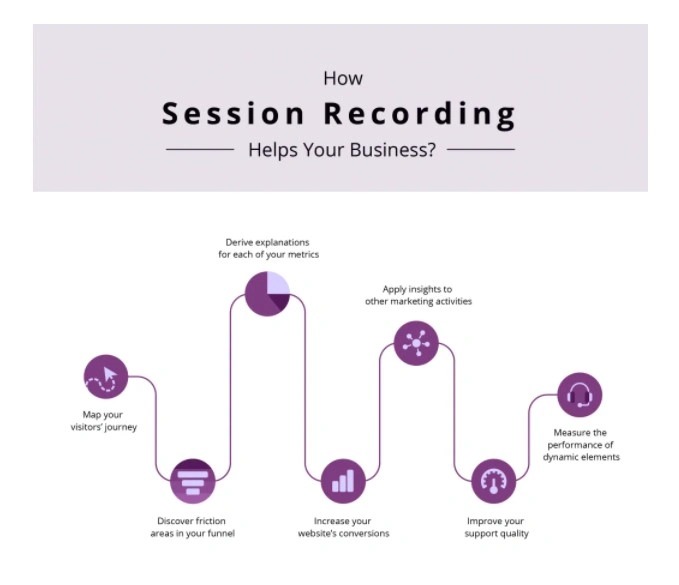
The most important include:
- Unintended negative effects on concentration, emotions, engagement, comfort, reactions, and behaviors of a respondent
- Reinforcing the sense of artificiality of a research situation
- Increased time for preparation and processing of results
- Additional work in terms of tagging, categorizing, and producing audio and/or video material.
The choice of registration technique is also an issue we should consider before performing the UX study.
In particular, we should consider the following issues:
- The complexity of research problems
- Research objectives
- When and where to conduct the study
- How we'll conduct it and how many respondents it'll involve
- The time in which we should complete the research project
- Methodological conditioning, which registration shouldn't violate
- Composition, roles, and responsibilities of individual members of the research team
- Amount, nature, and status of the information we want to obtain through the study
- Preferences, concerns, resistance, and attitudes of respondents
- Legal issues – especially regarding the problem of personal data protection and obtaining all necessary permissions.
We should be particularly sensitive, empathetic, and careful about the comfort of respondents, which should be the primary goal.
Ignoring attitudes toward registration technology and personal and group preferences is highly inadvisable.
It's essential to obtain fully informed permission based on exhaustive information regarding the registration of the study and the possibility of using, storing, and sharing the audio-visual material in further research processes.
High standards for anonymizing the identities of respondents should be a primary concern.
Above all, it's necessary to avoid recording information (personal or confidential data) that would reveal the identity of respondents.
The scope of what the researcher intends to record should also be very specific and clearly defined.
The main objects of registration should include the following:
- Processes
- Tasks
- Tools
- Expressed thoughts, reactions, and emotions
- Looking at behaviors, activities, and actions through users' eyes.
Each time, it's necessary to be guided by the well-being and comfort of a respondent and adapt the recording technique to their preferences and expectations.
Recording sessions in UX Research. Summary
- We can't perform UX Testing or application usability testing without – in most cases – recording the actions undertaken by respondents.
- In many cases, it is even necessary. It also provides a better understanding of the conversion determinants and helps to formulate more accurate conclusions. It guarantees a better understanding of activity and receiving more reliable study results.
- It helps optimize digital products, especially since the available tools make registration increasingly accurate and non-invasive.
- Recording UX research means that we can document it and process it at a later date.
- We can also use audio-video recordings, photos, screenshots, and records of user interaction with an interface for educational and presentation purposes.
- Web usability tests (for example, in E-Commerce, allow us to understand customers better) and the UX research registration performed during it increases the reliability, validity, credibility, and usability of the results obtained in the study.
- For researchers, conducting the study (UX usability testing, UX qualitative research) involves a lot of cognitive strain, stress, and the need to synchronize multiple tasks.
- The complexity of a research situation affects the level of concentration, perceptiveness, insight, and research inquisitiveness of the UX researcher.
- During a typical research session, the researcher must simultaneously take care of more than a dozen crucial issues that impact the quality of the study and its results.
- Registering is a form of supplementing, assisting "the eyes and the ears of the researcher."
- UX studies (recorded user sessions – monitoring traffic, actions, website navigation) are often documented with audio/video recorders, cameras, handwritten notes, and tools that record user interactions with an application interface (website traffic recording).
- Audio recording of UX research is especially recommended for unstructured studies.
- During a session recording, we can record UX study participants' reactions, behaviors, attitudes, and changing emotions over time.
- Photographic documentation is also an excellent supplement to audio recordings.
- Taking handwritten notes is the most basic technique for documenting the researcher's observations during the UX study.
- Notes are highly recommended for remote and structured research.
- Session recordings register cursor movement, clicks, taps, moments of inactivity, and scrolling of screens of web or mobile applications.
- When conducting UX tests, we should know that human memory is fleeting, concentration is variable, and observation capabilities are limited.
- Recording the course of the UX study and analyzing user behavior makes it possible, among other things, to increase the amount of information (user data is more diverse), the range of observations, and the depth and validity of the conclusions drawn from them.
- When we research websites, in the process of recording sessions, it's essential to obtain fully informed permission based on exhaustive information regarding the registration of the study and the possibility of using, storing, and sharing the audio-visual material in further research processes.



